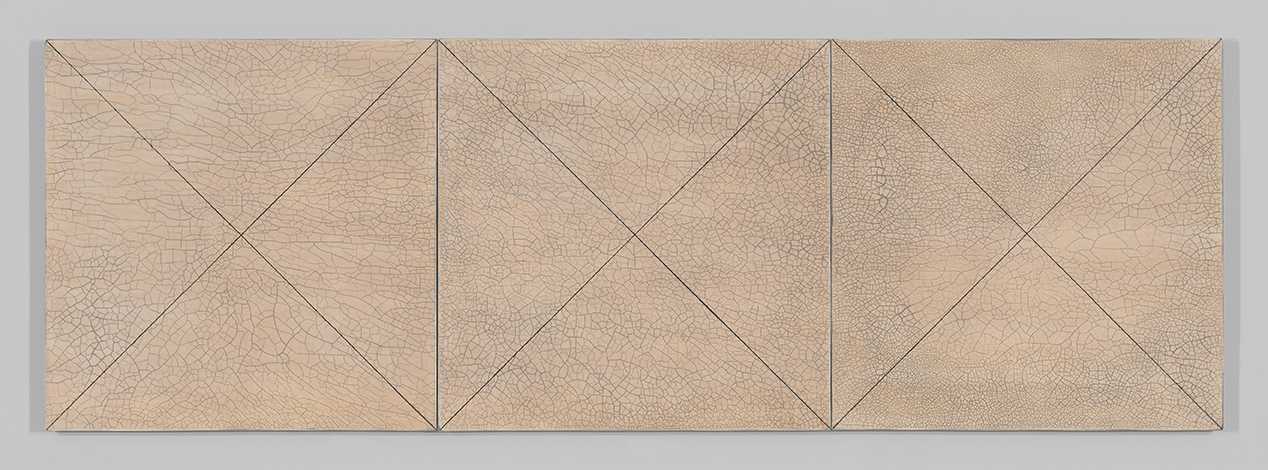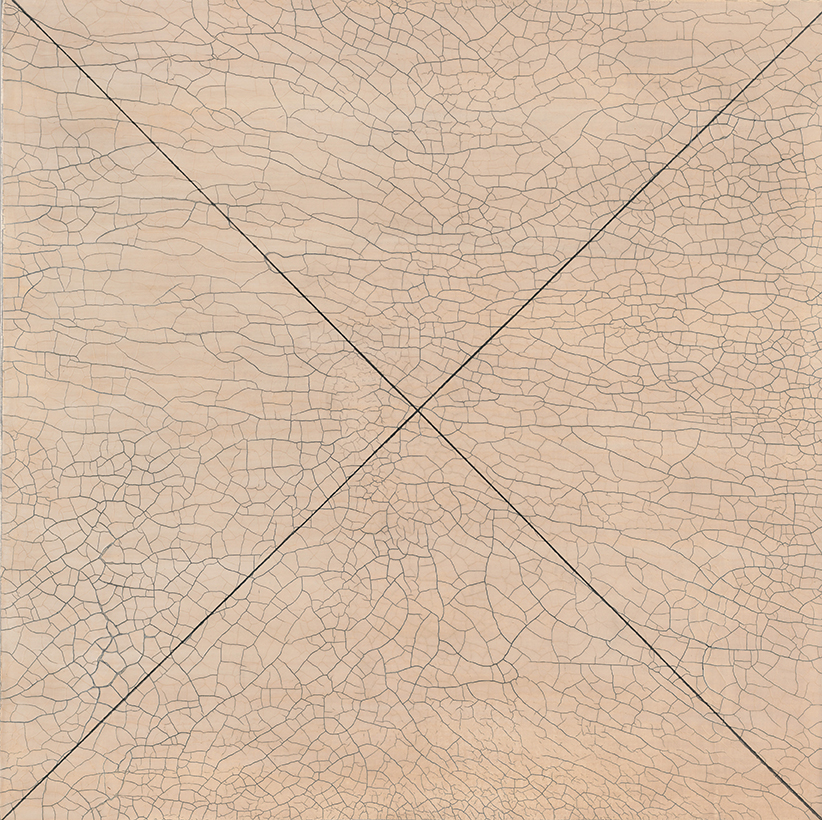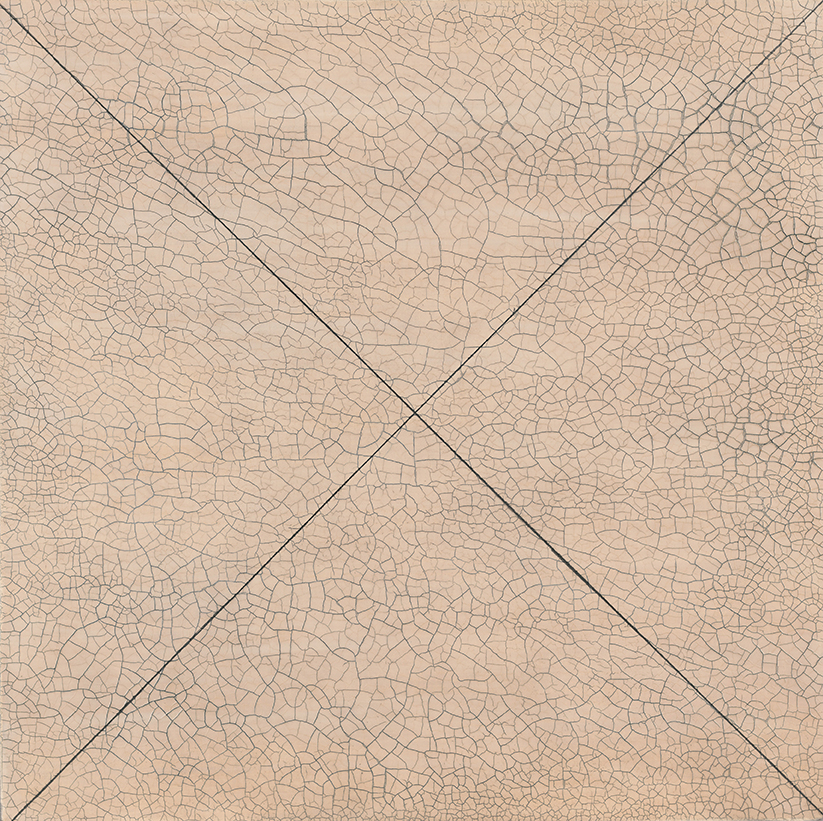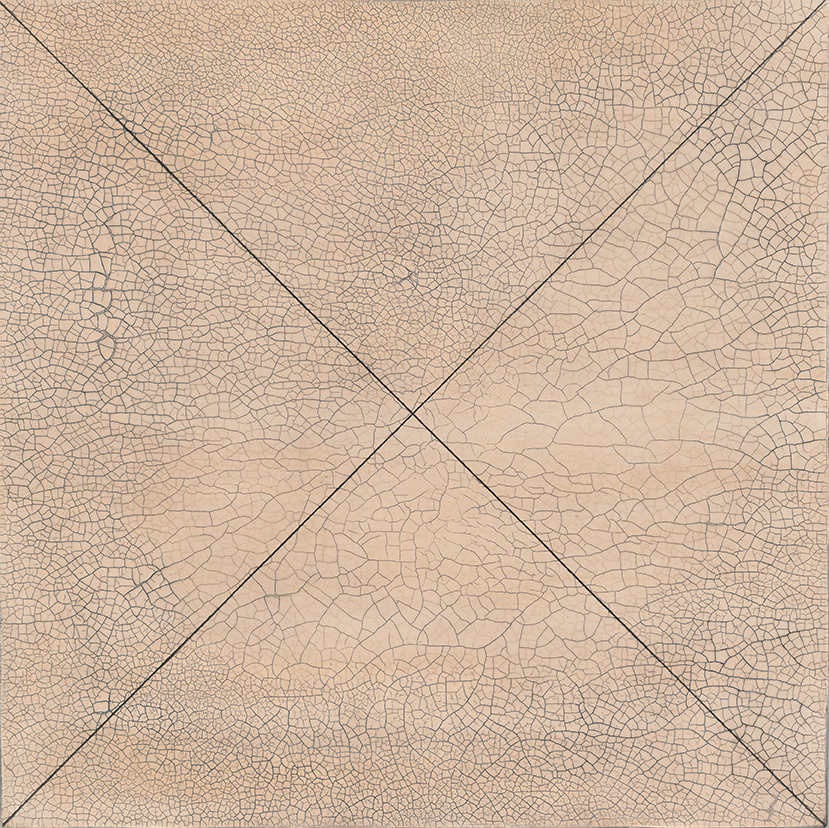Project Description

WMAA Caption
Gloria Graham, b. 1940
Axis, 1991
Kaolin, hide glue, graphite, and watercolor on cotton, three parts,
Overall: 34 × 102 5/8 × 3/4in. (86.4× 260.7 × 1.9 cm)
Whitney Museum of American Art, New York; gift from the Emily Fisher Landau Collection 2012.173a-c
© Gloria Graham
Photography caption for the WMAA photography
Digital Image© Whitney Museum, N.Y.
Photography for the catalogue photography done by Tim Nightswander
Photography/Tim Nighswander/Imaging4Art; courtesy Whitney Museum, N.Y.
Since the early 1990’s Gloria Graham has created a large body of increasingly complex paintings of geometric patterns, all based on the underlying physical structures of our environment. Her interest in the geometric construction and systems found in nature is motivated by a fundamental fascination with the patterns revealed by atomic microscopes. In her work, she seeks to foreground the extent to which these invisible building blocks can be made visible. In doing so, she illuminates the extent to which all of the objects and organisms in our universe are interconnected.
An example of Graham’s early work is AXIS (1991), which she asserts is firmly rooted in the physical environment. AXIS comprises three separate canvases, each of which Graham marked with a thin x in graphite across the surface. According to the artist, her use of the term axis is meant to refer to the center of the world, which forms the basis of all movement and of spatial geometry. Graham further explains that “to x space out is to form it.” Yet the initially simple appearance of AXIS is deceptive. The ground of each of the three canvases has been covered with a layer of kaolin clay and hide glue. This fragile surface is extremely susceptible to change, and these changes are in fact welcomed by the artist: thin cracks have spread across the squares and tonal variations in the pale yellow of the kaolin are clearly visible. Graham’s choice of kaolin clay as a medium also stands in stark contrast to the characteristically industrial materials of canonical Minimalism. In addition, kaolin connects the work to ancient Chinese ceramics and to methods of canvas preparation popular in fourteenth-century Italy, as well as to the Tibetan paintings known as thangkas. Interestingly, Graham has said she learned of the connection between kaolin and thangkas only after she began working with kaolin.
Graham’s subsequent works depart from the simplified forms of AXIS and present compositions of greater, though still understated, geometric complexity. These again find their origin in the smallest units of our natural world-the atomic symbols for minerals; to emphasize this, Graham printed an atomic symbol down the side of each painting. More recently, Graham has begun creating even more intricate works based on molecular structures. These compositions have become so large that they have outgrown the canvas to become elegant wall drawings.
-Mathew Israel

Axis, 1991 (detail)

Axis, 1991 (detail)
